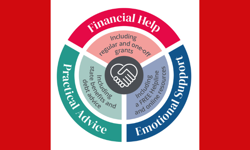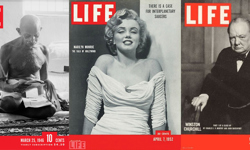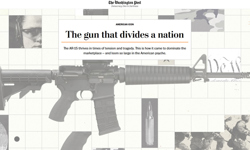Who’s going to win in the paid vs free media tug of war? Some publishers are firmly of the view that online content must be free: notable advocates of free content are the Guardian, Brand Republic from Haymarket, Econsultancy, Business Zone from Sift and our very own InPublishing. Over on the paid end of the rope we have the oft-quoted Financial Times, New Media Age from Centaur, Construction News from Emap and of course, Murdoch’s Times. There’s a war of PR raging, with Murdoch recently releasing his carefully crafted statistics on subscriber numbers, which include Kindle and iPad subscribers. Now most publishers agree that mobile devices can carry charges; the tussle is over pure web content, which is still where the majority of publishers focus. In this article, I’m concentrating on online content, and my view is that the solution for most publishers out of the national press spotlight is to work out a balance between free and paid content. But first, let’s take a look at the arguments for each of the opposing camps:
What’s great about free
As a publisher, if you publish free content in your specialist field, you can cover the market; there are no barriers to your target audience finding out what you do. This provides your advertisers with the maximum reach. Your articles are visible to search engines, which can provide the majority of your traffic, and are crucial for international markets. It’s easy for your prospective readers to sample your content, and, importantly, they can share this content with their friends and colleagues using social media. Free online content makes it tough for your competitors; think how much harder it is for Murdoch to establish a paywall when the Guardian provides its news for free. The most important reason (and this is why I believe a balanced strategy is essential) is that free content helps publishers build a database to market paid-for services.
But… there are some issues to consider. If you are dependent on online ads to fund your free content, then the infinite inventory available and the steady decline in ad yields will make that equation tougher and tougher. Commerce revenues can bridge the gap in very specialist markets, but not always. You have to keep feeding the content monster, as recent content is essential to search and social media visibility; so free online publishing can turn into a high cost, low revenue project. Many of your visitors will just view one article and then go, so you need very high traffic to build your long-term customers.
What’s great about paid
A paid strategy has several benefits: niche audiences can be profitable at low volume. As you know who your customers are, you can build a closer relationship. You can offer your advertisers a high value, focused group. You can cross-sell other products and services, such as events in business markets, or merchandise for consumers. And a key benefit is the predictability of revenues, just like print-based subscriptions.
However… this can be a difficult transition if content has been free for the same audience before the paywall is built. It’s extra tough if you have a free competitor. To justify the price, you need high quality content, which may mean signing up expert writers, or creating in-depth reports. This content is not visible to search engines, cutting off prospective readers, who can’t share your content on social media. It’s not as easy for casual readers to sample your content, and you will be offering a much smaller audience for advertisers. Payment management and protecting digital rights are complex.
What are the benefits of combining the two?
The solution is to combine free and paid services, and also establish an intermediate category of services that are free for registered customers. The free services help you sample new readers and build a reputation as an expert. The registered services create a database and start to develop a relationship with your readers. And the paid services enable the publisher to create a community, and offer a wider package of (priced) benefits.
This approach also works for advertisers, who can reach the entire market through the free channel, target specific groups via the registered database, and establish deeper relationships with the paying customers.
Who’s doing it well?
OK, so this sounds good in theory, but which publishers are making it work?
* The Financial Times has its famous metered access approach, which allows free access for the first 30 articles, then establishes a paid sub. With 180k subscribers, it’s a known success. Now print advertising is only 40% of its revenue, and the FT is starting to develop further paid niche propositions using its subscriber database.
* Econsultancy has a free blog with over 850,000 visitors a month. 100,000 users register to get access to forums and email newsletters. Just 5,000 pay for membership providing access to research reports and a listing. A small proportion of these pay for training, events, consultancy and data. Now ads make up just 15% of revenues, 35% are subs and half comes from events, training, consultancy and data. Their revenues are growing by 30% pa, so they seem to have got the mix right.
* Advanstar publish for the worldwide community of chromatographers. Their free digital magazine – The Column - reaches 140,000 and is ad-funded. They also run a free community on Ning which now has 2,000 members. They have developed an elearning service, Chromacademy, which now has over 3,000 subscribers at $300 pa, which is promoted via the digital magazine, website and community.
* K9 Media publish free websites for dog owners, and use these to promote a paid-for digital magazine and ebooks. They offer members extra offers and services as well as their magazine subscription. Advertisers enjoy flexible deals, including data, enewsletters, ads and commerce links directly from the magazine.
* Brand Republic have always operated a free model, but recently they established two services for registered users only: Brand Republic Intelligence – including data, research and forecasts – and Think BR a forum with aggregated blog content. Over 200,000 have registered and the publisher plans to introduce paid subs for premium content in future.
* Runners World publish free articles on their website, but make it clear which articles are subscriber only. Registered users get extra benefits such as a tailored newsletter and entering races online. Subscribers to the magazine see exclusive online content and advance race booking. Over the last ten years, subs numbers have grown consistently.
* Songlines are a niche publisher for world music fans. They create a free digital sampler magazine with excerpts from songs and links to and from Amazon. This sampler can get up to 50,000 views per edition and drives growth in paid subscriptions to their print and digital magazines.
* Accounting Web from Sift Media is based on a free publishing model, and drives revenues of £750k pa from its digital activities.
Oh, and even the Guardian, that champion of free online content, is experimenting with paid subscription services for businesses in the environment sector, based on their extensive coverage.
How to manage free and paid
So how do you get this balance right? Start with extensive free content to draw in your audience through search and social media. Develop a valuable enewsletter and other online privileges to incentivise registration. Don’t try to charge for what was free; instead develop exclusive reports, specials or ebooks for the subscriber package. Include a few ‘money can’t buy’ elements providing access to experts, celebs or gurus or exclusive subscriber events.
Why a blend of free and paid works for publishers and advertisers
Balancing free and paid works for publishers because the free content replenishes their database and protects them from competitors, the paid content keeps them close to their core audience, and they can develop multiple revenue streams beyond advertising.
It also provides more options for advertisers, who can combine the wide reach of the free proposition with the targeting opportunities of the registered group and the chance to develop a deeper relationship with the core audience.
The starting point is to work out what content you can publish for free, and develop new, valuable content and extra services to justify a price-tag. All this is easier if you are in a specialist market, and it helps to have a library of past articles or valuable data to strengthen your paid proposition. Good luck!










